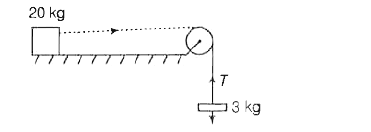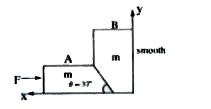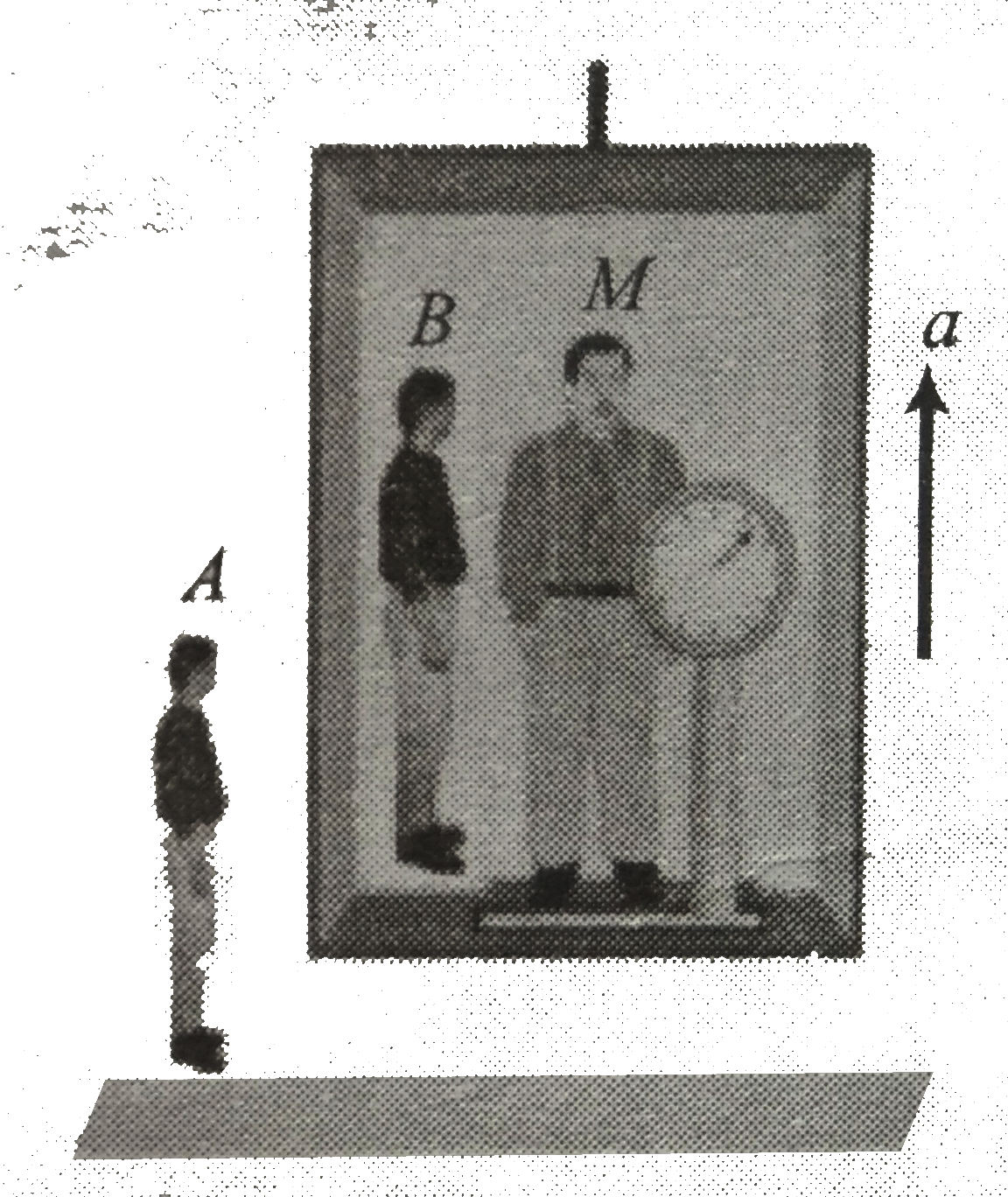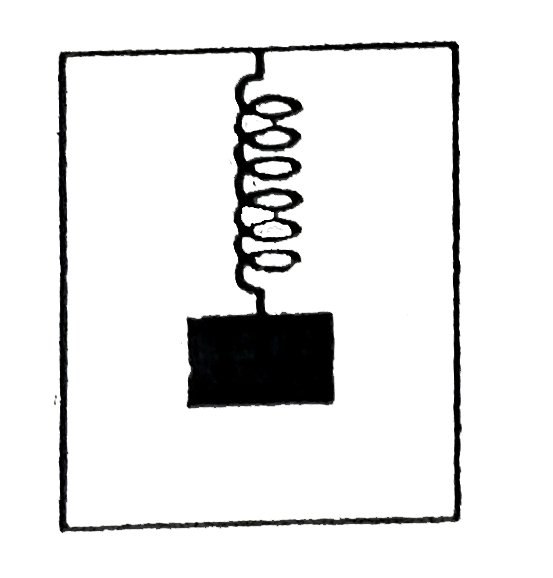A body of mass "m" is placed on an elevator. When the elevator accelerates upward and downward with the same magnitude 'a', the corresponding normal reactions on the body are N1andN2 respectively. The acceleration of the elevator
 Solution in Telugu
Solution in Telugu
a=N1+N22m
a=N1N22m
a=N1−N22m
a=2N1−N22m
The correct Answer is:C
Step by step video & image solution for A body of mass "m" is placed on an elevator. When the elevator accelerates upward and downward with the same magnitude 'a', the corresponding normal reactions on the body are N_1 and N_2 respectively. The acceleration of the elevator by Physics experts to help you in doubts & scoring excellent marks in Class 11 exams.
Updated on:21/07/2023Topper's Solved these Questions
- NEWTONS LAWS OF MOTION BOOK - AAKASH SERIESCHAPTER - NEWTONS LAWS OF MOTION EXERCISE - ADDITIONAL PRACTICE EXERCISE PRACTICE SHEET (ADVANECED) (More than One correct answer Type Questions)
3 Videos
- NEWTONS LAWS OF MOTION BOOK - AAKASH SERIESCHAPTER - NEWTONS LAWS OF MOTION EXERCISE - ADDITIONAL PRACTICE EXERCISE PRACTICE SHEET (ADVANECED) (Linked Comprehension Type Questions )
3 Videos
- NEWTONS LAWS OF MOTION BOOK - AAKASH SERIESCHAPTER - NEWTONS LAWS OF MOTION EXERCISE - ADDITIONAL PRACTICE EXERCISE (LEVEL - II (LECTURE SHEET (ADVANCED)) (Integer Type Questions )
3 Videos
- MOTION IN A STRAIGHT LINEBOOK - AAKASH SERIESCHAPTER - MOTION IN A STRAIGHT LINEEXERCISE - Questions for Descriptive Answers
7 Videos
- OSCILLATIONBOOK - AAKASH SERIESCHAPTER - OSCILLATIONEXERCISE - QUESTIONS FOR DESCRIPTIVE ANSWERS
12 Videos
Similar Questions
A body is mass 20 kg is moving on a rough horizontal plane. A block of mass 3 kg is connected to the 20 kg mass by a string of negligible mass through a smooth pulley as shown in the below figure. The tension in the string is 27 N. The coefficient of kinetic friction between the heavier mass and the surface is (g=10m/s2)

View SolutionTwo smooth blocks are placed at a smooth corner as shown. Both the blocks are having mass m. We apply a force F on the small block m. Block A presses the block B in the normal direction, due to which pressing force on vertical wall will increase, and presing force on the horizontal wall decreases. as we increase F. ( θ=37∘ with horizontal). As soon as the pressing force on the horizontal wall by block B becomes zero, it will loose the contact with the ground. If the value of F is further increased, the block B will accelerate in upward direction and simultaneously the block A will move toward right.

What is the minimum value of F, to lift block B from ground:
View SolutionTwo blocks 'A' and 'B' each of mass 'm' are placed on a smooth horizontal surface. Two horizontal force F and 2F are applied on both E the blocks 'A' and 'B' respectively as shown in figure. The block A does not slide on block B. Then the normal reaction acting between the two blocks is xF. The value of

View SolutionThree tortoises are located at the vertices of an equilateral triangle whose side equals a They all start moving simultaneously with velocity v constant in modulus with the first tortoise heading continually for the second , the second for the third and the third for the first . They will meet after time
View SolutionThe spring shown in figure is unstretched when a man starts pulling on the cord. The mass of the block is M. If the man exerts a constant force F, find the amplitude and the time period of the motion of the block.

View SolutionA man of mass M stands on a weighing machine in an elevator accelerating upwards with an acceleration a. Draw the free-body diagram of the man as observed by the observer A (stationary on the ground) and observer B (stationary on the elevator). Also, calculate the reading of the weighing machine.

View SolutionA body is suspended by a string from the ceiling of an elevator. It is observed that the tension in the string is doubled when the elevator is accelerated. The acceleration will be
View SolutionA spring mass system is hanging from the ceiling of an elevator in equilibrium. The elevator suddenly starts accelerating upwards with acceleration a, consider all the options in the reference frame of elevator.

View SolutionAssertion : The apparent weight of a body in an elevator moving with some downward acceleration is less than the actual weight of body.
Reason : The part of the weight is spent in producing downward acceleration, when body is in elevator.
View SolutionA barometer kept in an elevator accelerating upwards reads 76 cm of Hg. If the elevator is accelerating upwards at 4.9ms−2 , what will be the air pressure in the elevator?
View SolutionConsider an elevator moving downwards with an acceleration a, the force exerted by a passenger of mass m on the floor of the elevator is :
View SolutionA man of mass m is standing in an elevator moving downward with an acceleration g4. The force exerted by the bottom surface of the elevator on the man will be
View SolutionA barometer kept an elevator accelerating upwards reads 76cm of Hg. If the elevator is accelerated upwards at 4.9ms−2, then calculate the air pressure in the elevator?
View SolutionA man of mass "m" is standing on the floor of the lift. Find his apparent weight when:
(i) elevator is rest
(ii) elevator is accelerating upwards
(iii) elevator is accelerating downwards.
View SolutionA barometer kept an elevator accelerating upwards reads 76cm of Hg. If the elevator is accelerated upwards at 4.9ms^(-2) , then calculate the air pressure in the elevator?
View SolutionConsider an elevator moving downwards with an acceleration a, the force exerted by a passenger of mass m in the floor of the elevator is
View Solution
